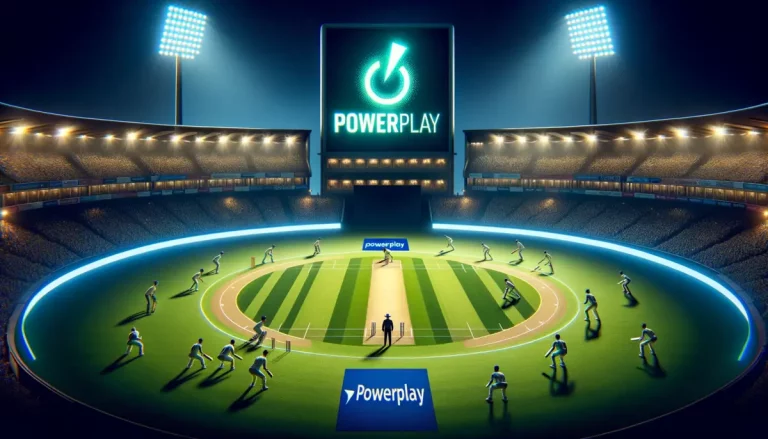Cricket Regulations for No Balls and Wides
Cricket Regulations for No Balls and Wides – For cricket fans, understanding the rules for no balls and wides is key to fully grasping the game.
In this article, we’ll break down the criteria for when umpires call these kinds of illegal deliveries.
200% Spribe Aviator Welcome Bonus
200% Spribe Aviator Welcome Bonus
- UPI, Paytm, gPay & PhonePe withdrawals
- Win 1000x Bet Amount!
- 450% Bonus up to ₹1,000,000
We’ll examine the definitions of no balls, like when a bowler oversteps the crease, and wides, when the ball is unreachable by the batsman.
You’ll learn what penalties bowlers face for bowling no balls and wides, such as extra runs awarded and needing to rebowl the delivery.
We’ll also discuss strategies bowlers use to avoid giving away extra runs from illegal deliveries.
Whether you’re new to cricket or a lifelong fan, deepening your knowledge of no ball and wide regulations will help you better comprehend the complexities and gamesmanship when watching a match.
Summary
Hide- No balls are called when the bowler's delivery is illegal, such as overstepping the popping crease or delivering the ball above waist height.
- Wide deliveries occur when the ball is delivered outside the marked batting crease, and the criteria for a wide vary depending on the format of the game.
- Both no balls and wides result in extra runs for the batting team, with a free hit awarded for no balls.
- Umpire signals are used to indicate when a no ball or wide has been bowled, and bowlers can avoid these by focusing on proper foot placement, consistent distance between the back foot and the return crease, and developing a controlled arm action. Regular practice and guidance from coaches or experienced players is also important.
Mastering the nuances around these common illegal deliveries is essential for truly appreciating the sport of cricket.
Definition of No Balls in Cricket
To understand the definition of no balls in cricket, you need to know what constitutes an illegal delivery.
In cricket, a no ball is called when the bowler’s delivery is considered illegal. There are several reasons why a delivery could be deemed illegal, leading to a no ball being called.
Firstly, if the bowler oversteps the popping crease at the time of delivery, it’s considered an illegal delivery and a no ball is given.
Secondly, if the bowler fails to keep his front foot grounded behind the popping crease while delivering the ball, it’s also deemed illegal.
Additionally, if the bowler’s arm is bent more than the allowed limit of 15 degrees while bowling, it results in an illegal delivery and a no ball.
Finally, if the bowler delivers the ball above waist height, it’s considered an illegal delivery and a no ball is awarded.
Understanding these various aspects of an illegal delivery will help you comprehend the definition of no balls in cricket and the consequences they carry.
Criteria for a Wide Delivery
When a cricket bowler delivers a ball that’s outside the marked batting crease, it’s considered a wide. A wide delivery is characterized by the ball being delivered too far away from the batsman’s reach, making it difficult for them to play a shot.
The criteria for a wide delivery are defined by the International Cricket Council (ICC) and vary depending on the format of the game being played.
In limited-overs cricket, a wide is called when the ball passes outside the wide guideline marked on the pitch on the leg side or off side, determined by the position of the batsman at the crease.
The guideline is usually set at the same distance from the stumps as the return crease, which is typically about 1.5 meters from the off stump. If the ball is delivered outside this guideline, it’s considered a wide.
In Test cricket, the criteria for a wide delivery are slightly different. In addition to the ball being outside the guideline on the leg side or off side, it must also be out of the reach of the batsman without moving their feet. The umpire judges whether the ball is wide based on their interpretation of the batsman’s ability to play a shot.
Understanding the criteria for a wide delivery is important for both bowlers and batsmen, as it affects the outcome of the game.
A wide results in an extra run being awarded to the batting team, and in limited-overs cricket, an additional ball is also bowled. It’s crucial for bowlers to maintain control and accuracy to avoid bowling wides and giving away free runs.
In the subsequent section, we’ll discuss the consequences of no balls and wides, and how they impact the flow of the game.
Consequences of No Balls and Wides

If a bowler bowls a no ball or a wide, you’ll face consequences that can impact the outcome of the game. These consequences are designed to ensure fairness and maintain the integrity of the sport.
Here are the two sub-lists that outline the consequences of no balls and wides:
Consequences of No Balls:
- Free hit: If a bowler bowls a no ball by overstepping the popping crease, the next delivery is a free hit. This means that the batsman can’t be dismissed by any means except for a run-out. It gives the batsman an opportunity to score runs without any risk.
- Extra run to the batting team: In addition to the run scored off the no ball, the batting team is awarded an extra run. This can significantly impact the total score and provide an advantage to the batting team.
Consequences of Wides:
- Extra run to the batting team: When a bowler bowls a wide, the batting team is awarded an extra run. This helps in boosting the team’s total score.
- Re-bowl the delivery: In addition to the extra run, the delivery is considered null and void. The bowler has to re-bowl the delivery, which gives the batsman another opportunity to score runs.
These consequences ensure that bowlers are penalized for delivering no balls and wides, while also providing advantages to the batting team. It adds excitement and strategy to the game, making it more enjoyable for both players and spectators.
Umpire Signals for No Balls and Wides
After facing the consequences of no balls and wides, you’ll now learn about the umpire signals for these infractions. Umpires play a crucial role in ensuring fair play and enforcing the rules of cricket.
When a no ball is bowled, the umpire will extend one arm horizontally and call out ‘No ball!’ This signal alerts the batsman and the scorers that the delivery was illegal. It’s important for the umpire to make this signal promptly to avoid any confusion.
- Evaluating the Role of Technology in Cricket Scoring System
- Examining the Impact of Weather Conditions on Cricket Scoring System
- Exploring the Psychology Behind Batsman’s Approach to Cricket Scoring System
- How Does the Duckworth-Lewis Method Work in Cricket Scoring System?
- Understanding the Importance of Boundaries in Cricket Scoring System
On the other hand, when a wide is bowled, the umpire will extend both arms horizontally. This signal indicates that the ball was too wide for a fair delivery. The umpire will also call out ‘Wide!’ to make it clear to the players and the scorers.
These signals help maintain transparency and ensure that both teams are aware of any infractions. Umpires must be attentive and accurate in their signaling to maintain the integrity of the game.
By understanding these signals, players and spectators can better follow the flow of the game and appreciate the efforts of the umpires in upholding the rules.
Tips for Bowlers to Avoid No Balls and Wides
To avoid bowling no balls and wides, bowlers should focus on maintaining proper foot placement and following through with a smooth arm action. Here are some tips to help you improve your bowling technique and minimize the risk of bowling no balls and wides:
Foot Placement
- Ensure that your front foot lands within the bowling crease to avoid overstepping and bowling a no ball.
- Maintain a consistent distance between your back foot and the return crease to prevent wides.
Arm Action
- Aim for a fluid and controlled arm action to maintain accuracy and minimize errors.
- Avoid rushing your delivery stride, as it can lead to overstepping or losing control, resulting in no balls and wides.
Implementing these tips will help you develop better control over your bowling, reducing the chances of bowling no balls and wides.
Additionally, practicing regularly and seeking guidance from coaches or experienced players can further enhance your skills and prevent errors.
Conclusion: Cricket Regulations for No Balls and Wides
In conclusion, understanding the regulations for no balls and wides in cricket is crucial for both bowlers and umpires.
By adhering to the criteria set for these deliveries, players can avoid penalties and maintain fair play.
Umpires play a vital role in signaling these infractions, ensuring the integrity of the game.
200% Welcome Bonus | SPRIBE
200% Welcome Bonus | SPRIBE
- UPI, Paytm, gPay & PhonePe withdrawals
- Win 1000x Bet Amount!
- 450% Bonus up to ₹1,000,000
Bowlers can benefit from tips and techniques to prevent committing no balls and wides, enhancing their overall performance.
Overall, knowledge and adherence to these regulations contribute to a smooth and competitive cricket match.
Frequently Asked Questions (FAQs)
How Are No Balls and Wides Different From Each Other in Cricket?
No balls and wides are different from each other in cricket. No balls occur when the bowler oversteps the crease, while wides happen when the bowler delivers the ball wide of the batsman’s reach.
Can a Bowler Be Penalized for Consistently Bowling No Balls and Wides?
Yes, a bowler can be penalized for consistently bowling no balls and wides. The umpires can issue warnings, deduct runs, or even remove the bowler from the attack if the infractions persist.
Are There Any Specific Rules Regarding the Height at Which a Wide Delivery Is Considered Valid?
There are specific rules regarding the height at which a wide delivery is considered valid in cricket. These rules ensure that the ball is within a certain height range for it to be considered a fair delivery.
What Happens if a Batsman Hits a No Ball or a Wide Delivery for a Boundary?
If you hit a no ball or a wide delivery for a boundary, you will be awarded runs. The number of runs will depend on the specific situation and the rules of the game.
Are There Any Specific Guidelines for Umpires to Determine Whether a Delivery Is a No Ball or a Wide?
To determine if a delivery is a no ball or wide, umpires follow specific guidelines. These guidelines include checking the bowler’s front foot for overstepping and assessing whether the ball crosses the wide line.








